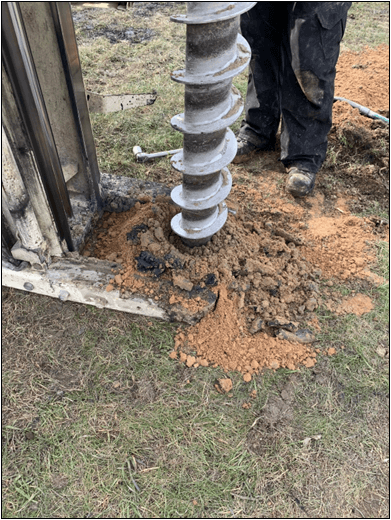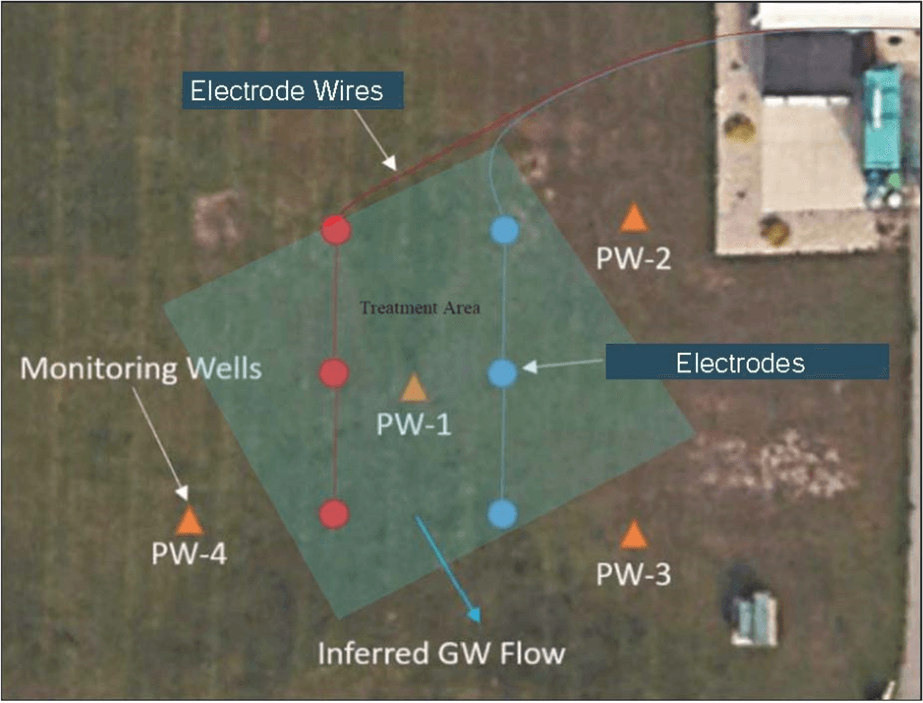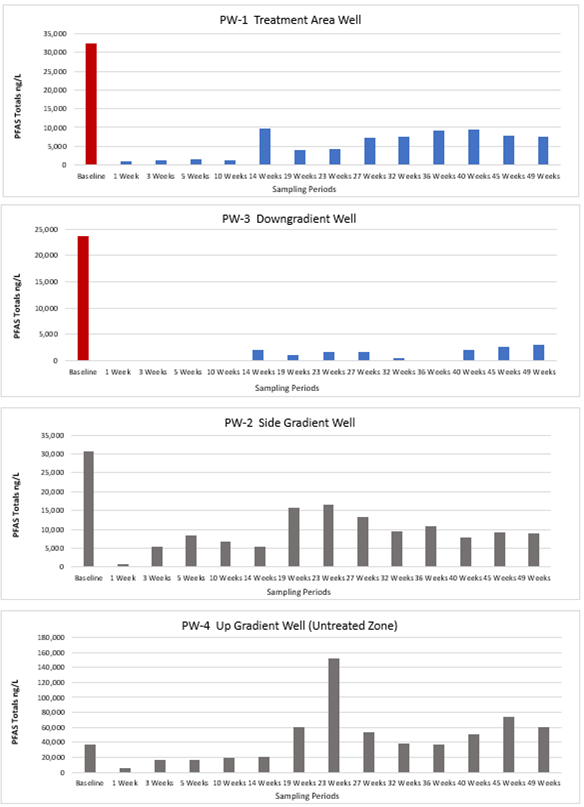Project Summary
ORIN identified an approximate 1,600 sq-ft area, within a larger plume, to perform a pilot injection event to remediate PFAS in soil and groundwater. Fire training was believed to be conducted in the area for testing the AFFF suppressant system.
Four wells were installed prior to injection to characterize the groundwater concentrations and parameters. One well (PW-1) is in the center of the treatment area while the other three are around the perimeter. ORIN used a combination of PFAS Degrading Microbes and BAM Ultra in 17 injection locations.
Vacuum extraction was incorporated as part of the treatment process to assist in chemical amendment distribution. By coordinating the injection locations and extraction rates, hydraulic movement of the groundwater can be controlled during the treatment application.
Following the injection, an electrokinetic system was installed to generate oxygen within the subsurface. Six electrodes were placed at a depth matching the injection interval. The oxygen is necessary for the aerobic PFAS Degrading Microbes. The system is low voltage and compatible with existing utilities.
Data
PFAS samples were collected and analyzed monthly. Analytical samples taken from PW-1 maintained average totals reductions of 83% over 1 year. The downgradient well, PW-3, observed total reductions averaging 95% for 1 year. Spikes after week 23 are attributed to a rise in water table contacting vadose zone impacts and increased hydraulic conductivity.
Groundwater flows to the southeast at approximately 1 -ft/day. Despite the continual influx, the treatment chemistry maintained PFAS reductions within the treatment area for one year after the single injection event. Large increases from baseline are observed at PW-4 (60% increase) and rebounding at PW-2 due to untreated upgradient sources continuing to migrate into the area.
Project Results
The approach has proven to maintain reduced PFAS concentrations in groundwater within the treatment area. The treatment method also acts as barrier wall, stopping PFAS from migrating downgradient.




